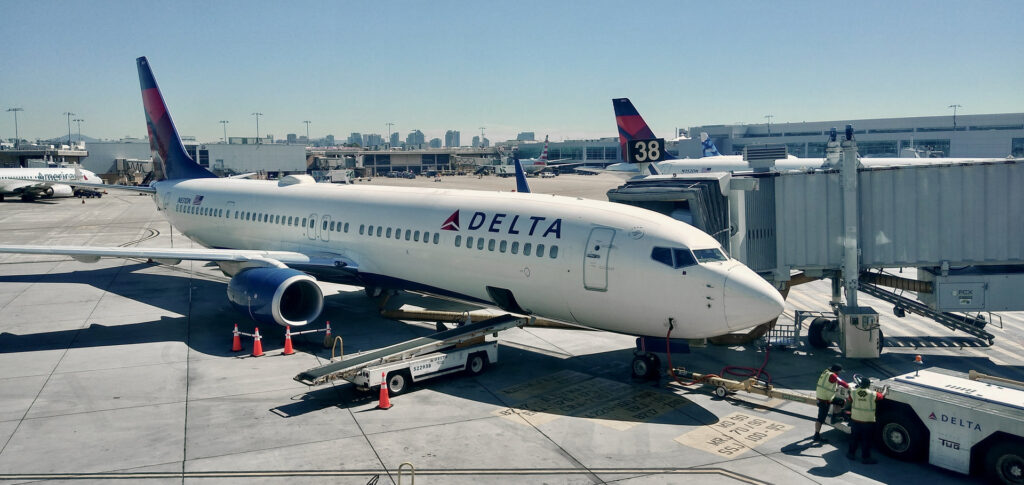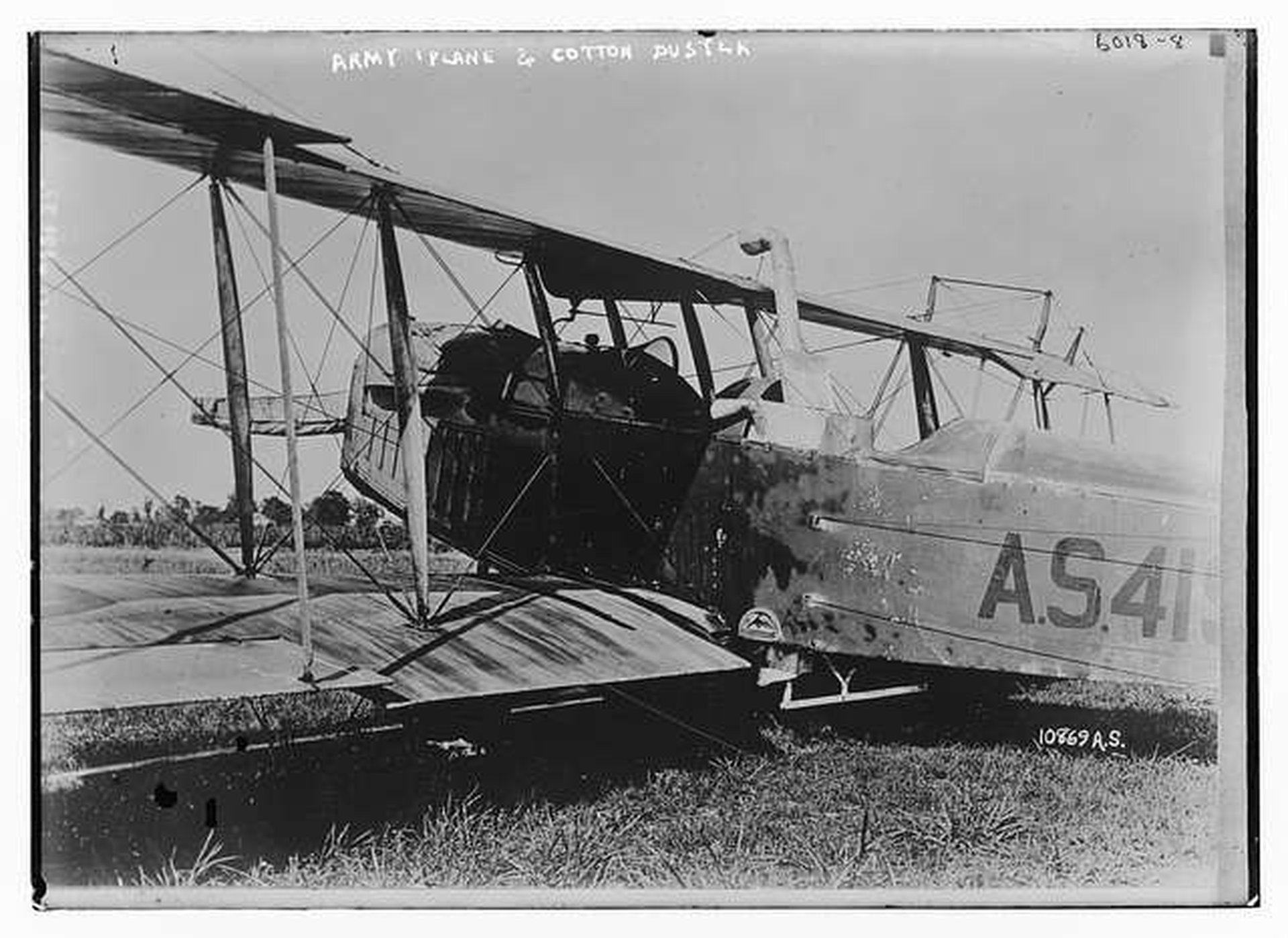How Delta Airlines Took Flight
When you hear the name Delta Airlines, you probably picture sleek jets at bustling terminals, boarding calls over PA systems, and cross-country or international travel. But nearly a century ago, Delta’s story began somewhere far less glamorous: flying low and slow over Southern cotton fields, trailing clouds of pesticide behind biplanes built to fight bugs.

Yes, before Delta flew passengers, it flew poison.

This lesser-known chapter of aviation history takes us back to the early 1920s, when the American South faced an agricultural crisis: the boll weevil. This tiny beetle had migrated into U.S. cotton territory from Mexico in the late 19th century and quickly became one of the most destructive pests in agricultural history. By the early 1900s, it had devastated millions of acres of cotton, decimating local economies and sending researchers scrambling for solutions.

In 1921, the U.S. Army Air Service joined the fight, outfitting a Curtiss JN-4 “Jenny” with a crude hopper filled with powdered calcium arsenate. Pilots flew over infested fields near Tallulah, Louisiana, releasing the dust in an attempt to coat cotton plants with insecticide from above. The idea seemed radical at the time, but it worked—and it sparked the imagination of a USDA entomologist named B.R. Coad.
Coad saw the potential to turn crop dusting into a full-time operation. With the help of Army pilot Harold Harris, he approached Huff-Daland Aero Corporation, a Pennsylvania-based aircraft manufacturer that had just begun producing military trainers. Coad and Harris proposed a revolutionary idea: design and build the first aircraft intended specifically for agricultural purposes.

By 1924, the result was Huff-Daland Dusters, Inc., headquartered in Macon, Georgia. With a fleet of specially modified biplanes, they became the world’s first commercial crop dusting company. Their planes featured reinforced fuselages, larger chemical hoppers, and spreader systems designed for consistent coverage across large fields. The pilots—nicknamed the “Delta Puffers” due to the clouds of dust trailing behind them—became icons of early ag aviation, flying low-altitude runs over farmland in conditions that were often hot, humid, and turbulent.
These missions weren’t without danger. Early dusters flew just 10 to 15 feet above ground, often dodging trees, fences, and power lines. The calcium arsenate powder was toxic, and protective gear was primitive. Yet the success of the operation was undeniable: crop yields recovered, the boll weevil was pushed back, and Huff-Daland Dusters became a fixture in Southern agriculture.
But by the late 1920s, the company saw a new opportunity. In 1928, Huff-Daland Dusters moved its base to Monroe, Louisiana, and reorganized under a new name: Delta Air Service. The company’s first commercial flight took place in 1929, carrying passengers from Dallas, Texas, to Jackson, Mississippi, with a stop in Shreveport. They operated Travel Air Model S-6000-Bs, single-engine monoplanes that could seat five passengers comfortably—though “comfortably” was a relative term in the late 1920s.
The name “Delta” was chosen as a tribute to the Mississippi Delta region, where the company had its roots—and where it had helped revive cotton farming through aerial innovation.
As the airline grew, it shifted its headquarters to Atlanta, Georgia, and expanded its passenger services throughout the South. In 1930, Delta briefly halted service due to a loss of airmail contracts, but returned stronger in 1934 after securing new routes. It acquired new aircraft, including the Douglas DC-3, which became the backbone of early commercial aviation. By the 1940s, Delta was becoming a serious contender in the U.S. airline industry.
In 1945, the company officially changed its name to Delta Air Lines, and the crop dusters were left behind as part of a proud but distant past. However, the innovation and daring spirit that defined Huff-Daland Dusters remained deeply woven into the company’s culture.

Over the following decades, Delta would pioneer in-flight services, introduce jet aircraft, and become one of the founding members of the SkyTeam Alliance. It acquired Northeast Airlines in 1972, Western Airlines in 1987, and eventually Northwest Airlines in 2008, cementing its position as one of the largest airlines in the world.
But every massive corporation has an origin story—and Delta’s just happens to include bugs, biplanes, and a whole lot of dust.
Did You Know?
- Delta’s first aircraft maintenance base was a modified hangar in Monroe, LA—next to a cotton field.
- The company’s first planes for passenger service were leased from Travel Air Manufacturing Company.
- The original crop dusting planes could carry roughly 200 pounds of powdered pesticide in belly hoppers.

From spraying fields to spanning continents, Delta Airlines’ transformation is one of the most unusual and inspiring in aviation history. It’s a reminder that the earliest chapters of commercial aviation weren’t written in boardrooms or hangars—but in hot, humid fields where biplanes chased beetles.
If you enjoyed this look at the unexpected roots of Delta Airlines, check out my companion post on the Grumman Ag Cat—a purpose-built crop duster that continued the legacy of agricultural aviation into the jet age.
Until next time, keep your eyes on the skies…
Discover more from Buffalo Air-Park
Subscribe to get the latest posts sent to your email.

